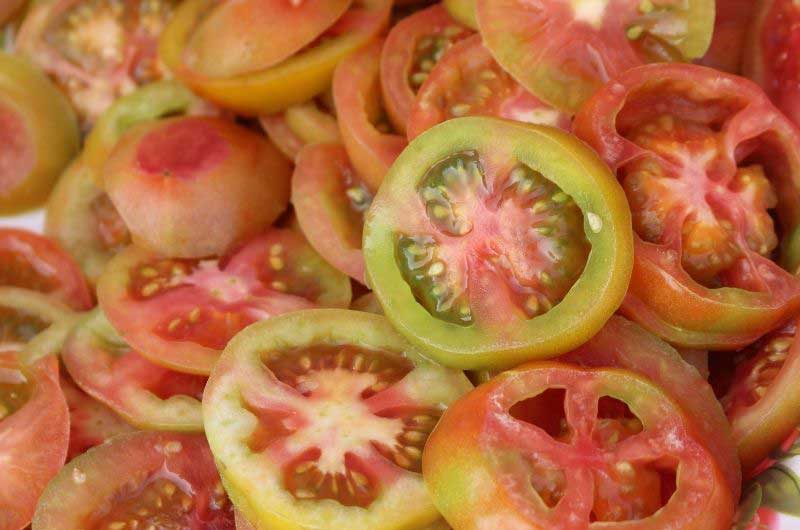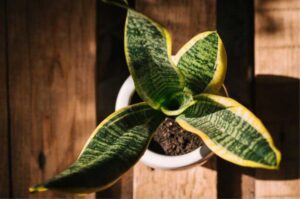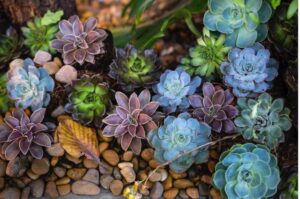Is It Safe To Eat A Tomato That Is Greenish On The Inside?
Experts say that it is safe to eat a tomato that is greenish on the inside. The greenish gel can be naturally occurring chlorophyll, or the greenish color inside the core could be a sign of stress, caused by factors such as nutrient deficiencies, pests, drought; or the tomato might not be ripe. If the tomato doesn’t have any mold or defects, then it should be safe to eat.
In the following sections, I’m going to cover several reasons that tomatoes can become a greenish color on the inside and whether it is safe to eat or not.

Why Is The Inside Of My Tomato Greenish?
There are several different scenarios where there may possibly be a greenish color present on the inside of your tomato. Here is a list of a few of them:
- Greenish gel near the core and surrounding the seeds
- Greenish flesh in the core of the tomato
- Heirloom varieties that are partially or entirely green on the inside
- External factors in the surrounding environment
What Is The Greenish Gel Inside A Tomato?
The gel found inside tomatoes serves as a protective coating around the seeds and as a source of energy once the seed has sprouted. Most of the time the greenish color of the gel that is found inside tomatoes simply comes from an abundance of chlorophyll cells. Chlorophyll is responsible for making all plants their green color and serves as the location of photosynthesis, the conversion of sunlight to energy.
Is The Greenish Gel Inside A Tomato Safe To Eat?
Experts say that it is safe to eat the greenish gel inside a tomato! According to some clinical trials, the natural greenish gel found around the tomato seeds can even help maintain healthy blood circulation by preventing blood clots. So, not only is the greenish gel safe to eat, but it has also proved to be good for you.
Is My Tomato Greenish On The Inside Because It Is Not Ripe?
The greenish color on the inside core of the tomato usually indicates that it is not ripe. Tomatoes will naturally ripen from the inside out. So, if it has the characteristics of a ripe tomato on the outside, but is still greenish on the core, then the greenish color is more likely to be caused by another factor.
The following is a list of characteristics that indicate a ripe tomato:
- Shiny skin
- Deep color hues
- Fresh pungent aroma
- Tender to the touch
- Easily falls off vine when picking
Are Unripe Tomatoes Safe To Eat?
Green unripe tomatoes are safe to eat! In fact, studies show that green tomato extracts, which contain the secondary compound tomatine, inhibit the growth of human breast, colon, liver, and stomach cancer cells. (1) Unripen green tomatoes also contain tomatine, so even though they may not taste as flavorful as ripe tomatoes, they are incredibly healthy for you to eat! So, get yourself some fried green tomatoes!
Are All Tomatoes Supposed To Be Red?
There are over 3000 breeds of heirloom tomatoes that have striking color variations from the conventional red tomatoes that you would find at a typical grocery store. These heirloom breeds can naturally be partially or entirely green on the inside.
Heirloom tomato varieties have a greater chance of displaying a natural greenish color inside the tomato because that trait was not selectively bred out of them.
The following is a list of the different colors heirloom tomatoes can come in:
- Red
- Purple
- Black
- Orange
- Yellow
- White
- Green
Why Are The Tomatoes At The Grocery Store Perfectly Red?
The tomatoes that you find at a standard grocery store are selectively bred to have that ideal red color, round shape, and uniform constancy on the inside. Traits such as the greenish gel, odd shapes, and different sizes were all bred out of commercial tomatoes to create an appealing and marketable product that is the same for everyone.
What External Factors Can Cause Tomatoes To Be Greenish On The Inside?
The environment that a plant is trying to grow in is always going to cause stress on that plant. A large amount of stress can wreak havoc on that plant’s ability to produce quality fruit. There are several different environmental factors that could cause a tomato plant stress and lead to the discoloration of the flesh or the core of the tomato. If left untreated, many of these issues can create unsafe tomatoes to eat.
The following can all cause issues that can lead to a greenish color inside your tomatoes:
- Nutrient deficiencies in the soil
- Improper fertilization techniques
- Drought
- Overwatering
- Pests
- Bacterial Infections
- Viruses
- Blights
Is It Safe To Use The Diseased Tomatoes If I Cut The Bad Parts Out?
Experts do not recommend eating fresh or frozen tomatoes from a diseased plant, even if the diseased parts have been cut out. This is because the tissue damage causes the tomatoes to have a lower acidity, which can create conditions that promote the growth of potentially harmful microorganisms, such as Clostridium botulinum, a deadly toxin that causes botulism.
Are Tomatoes Poisonous?
Tomatoes are from the Solanaceae, or nightshade family, and do have secondary compounds called solanine that in high concentration can be toxic. It’s not advised to eat the leaves or stems of plants because that is where the highest concentrations of solanine compounds are found. are also present in the fruit, but never in a toxic concentration. That means that you cannot eat enough raw tomatoes to be adversely affected by these secondary compounds, so don’t worry!
When Is It Unsafe To Eat A Tomato?
Although tomatoes are not poisonous to humans, you should stay away from anything overripened. Once tomatoes go soft, they will begin to leak liquid, which is a clear indication that the fruit has gone bad and is not safe to eat. If there is the presence of mold or fruit flies, they should also not be eaten.






